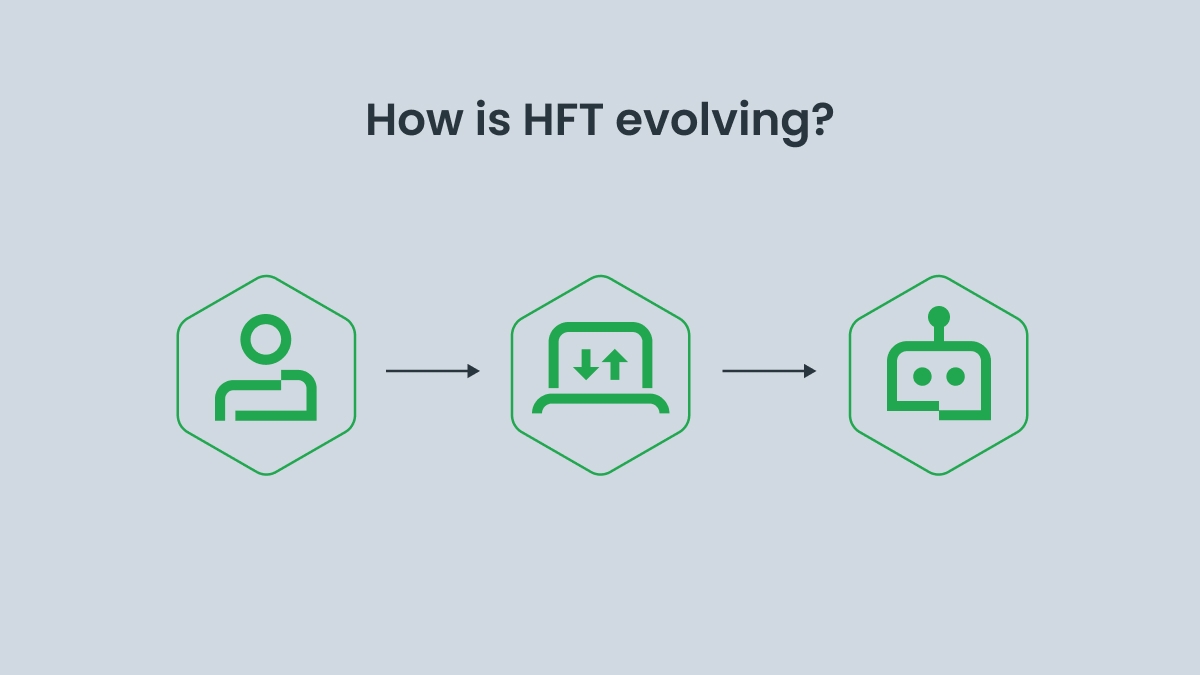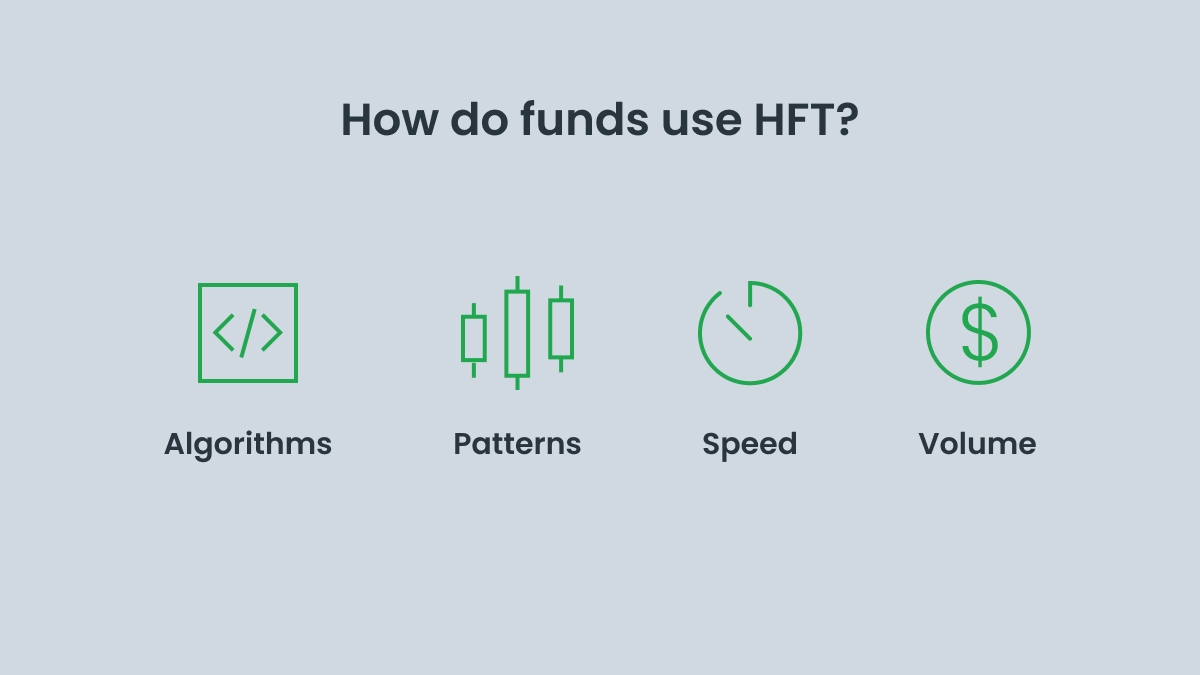In 2012, Canada introduced fees to slow down high-frequency trading. This was done to make trading fairer and to reduce the amount of orders on exchanges. This resulted in less liquidity in the market, however, and bid-ask spreads got wider. That meant that trades became slightly more expensive for everyone, but particularly for the everyday investors that these fees were trying to help in the first place.
The disadvantages of high-frequency trading
HFT has drawn plenty of criticism, too. One big complaint is that it takes humans out of the loop. Instead of real people making trading decisions, algorithms are the ones that run the show. These programs respond in milliseconds, so they are much faster than anyone can think. It’s a kind of speed that no human can keep up with.
In 2010, the Dow Jones Industrial Average dropped around 1000 points in just 20 minutes. This came to be known as the "Flash Crash." Investigators found that a single large order triggered a wave of automated selling trades, which made things spiral out of control. Eventually, the crash was stabilized and the Dow recovered quickly, but damage had been done, and this showed the risks associated with HFT.
Some view HFT as being unfair. Big trading firms spend millions on faster cables, better servers, and smarter code, and they have massive amounts of capital to trade with. All of this gives them a huge advantage over smaller firms and regular people.
“Ghost liquidity” is when HFT firms post orders to buy or sell, but cancel them almost immediately. It creates the illusion of activity and liquidity in the market. As soon as you place the trade, the liquidity is already gone because the orders were cancelled. This can be frustrating for regular investors who see that someone is willing to pay a certain price for a stock, but that opportunity disappears as soon as they try to.
How HFT is evolving

High-frequency trading, or HFT, has been part of the stock market for years. It hit a peak in 2009 when it made up around 60% of all trading volume in the US. That meant that 60% of trades were made by computers. Today, that number is about 50%. Europe joined the HFT game a little later, peaking in 2010, and then dropping a little, too.
Profits generated by HFT have changed, however. In 2009, US firms made more than $7 billion from HFT. In 2017, they made less than $1 billion. What happened? More firms started using this technology, so competition got tougher, and market volatility cooled off. It also became more expensive to stay competitive, with rising costs.
Firms started spending more and more money on faster tech and data. Some firms started paying big to rent space to be able to place their servers as close as physically possible to stock exchange computers. This is called co-location, and is used to receive data from stock exchanges before the other players, making a difference of microseconds. Exchanges, seeing the demand, raised their fees for data access and server space.
Dark pools have also become more popular. These are private exchanges where large investors trade in secret. These trades don’t show up in the public order books and data feeds that HFT algorithms rely on, which means they don't have the entire picture when they place the trades they were programmed to spot, and therefore make fewer profits.
Many HFT firms have started merging. Bigger companies are buying smaller ones to stay afloat and keep an edge. Virtu, a high-frequency trading company, now handles around 20% of trades in the US market.
Regulators are paying more attention, too. The rules are changing, and what was once allowed is now being regulated. The US Securities and Exchange Commission (SEC) has actually issued fines and opened investigations into high-frequency trading firms for manipulating prices and traders and playing with "ghost liquidity."
Final thoughts
One could argue that advances in technology have helped average traders more than they’ve hurt them. Back in the ’80s, you had to call your broker to place a trade, pay hefty fees, and keep up with market prices through TV or the next day’s newspaper. It was a whole different process. Now, you can trade instantly, often with little to no fees, from the comfort of your home, or even your pocket. You’ve got real-time access to data, charts, and tools that used to be reserved for professionals. Technology has seriously leveled the playing field for the average investor.
At the same time, though, technology has also helped the big firms and opened the door to complex systems like high-frequency trading, which bring a whole new set of questions, one of which is: Is HFT even ethical? If only the biggest players can set the pace and win, while everyday investors are left reacting to moves they can’t even see, is that really fair?
Some argue that HFT does more good than harm. It makes markets faster, more efficient, and often cheaper to trade. Others say it’s just a way for the powerful to stay ahead in a rigged game and leave everyone else in the dust. Whether or not it's fair doesn’t change the fact that HFT exists and is a part of today’s reality. So, if you want to understand how markets work today, it’s worth knowing about HFT and understanding how it works, because there’s a lot happening behind the scenes.


